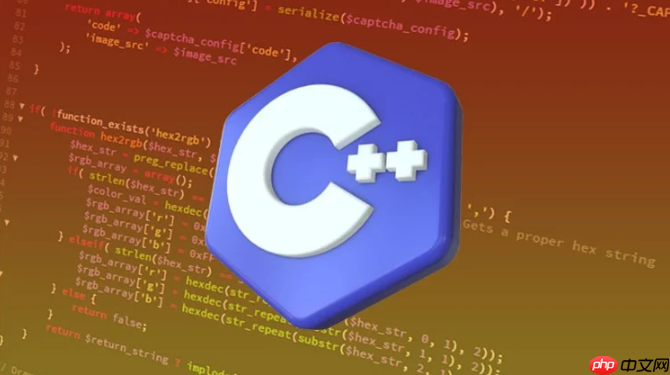C++中遍历map常用方法包括:1. 传统迭代器,适用于所有标准;2. auto简化迭代器声明,代码更简洁;3. 范围for循环(C++11起),推荐使用const auto&避免拷贝;4. 非const引用可修改值;5. const_iterator确保只读访问。日常推荐范围for结合auto,清晰高效。

在C++中,遍历一个map容器有多种方法,常用的方式包括使用迭代器、范围for循环(C++11起)、以及使用auto关键字简化代码。下面通过具体示例说明各种遍历方式。
1. 使用传统迭代器遍历
这是最经典的方式,适用于所有C++标准版本。
#include <iostream> #include <map> using namespace std; int main() { map<string, int> scores = { {"Alice", 95}, {"Bob", 87}, {"Charlie", 92} }; for (map<string, int>::iterator it = scores.begin(); it != scores.end(); ++it) { cout << "Key: " << it->first << ", Value: " << it->second << endl; } return 0; }
2. 使用auto关键字简化迭代器声明(C++11及以上)
让编译器自动推导迭代器类型,代码更简洁。
for (auto it = scores.begin(); it != scores.end(); ++it) { cout << "Key: " << it->first << ", Value: " << it->second << endl; }
3. 使用范围for循环(推荐,C++11及以上)
语法最简洁,适合大多数场景。
立即学习“C++免费学习笔记(深入)”;
for (const auto& pair : scores) { cout << "Key: " << pair.first << ", Value: " << pair.second << endl; }
注意:使用const auto&可以避免拷贝,提高效率,尤其当键或值是复杂对象时。
4. 如果需要修改map中的值
可以通过非const引用在范围for中修改value部分(key不能修改)。
for (auto& pair : scores) { pair.second += 5; // 给每个人加5分 }
5. 使用const_iterators确保只读访问
当你明确不修改数据时,使用const迭代器更安全。
for (map<string, int>::const_iterator it = scores.cbegin(); it != scores.cend(); ++it) { cout << it->first << ": " << it->second << endl; }
基本上就这些常见用法。日常开发中推荐使用范围for + auto的方式,代码清晰且高效。


